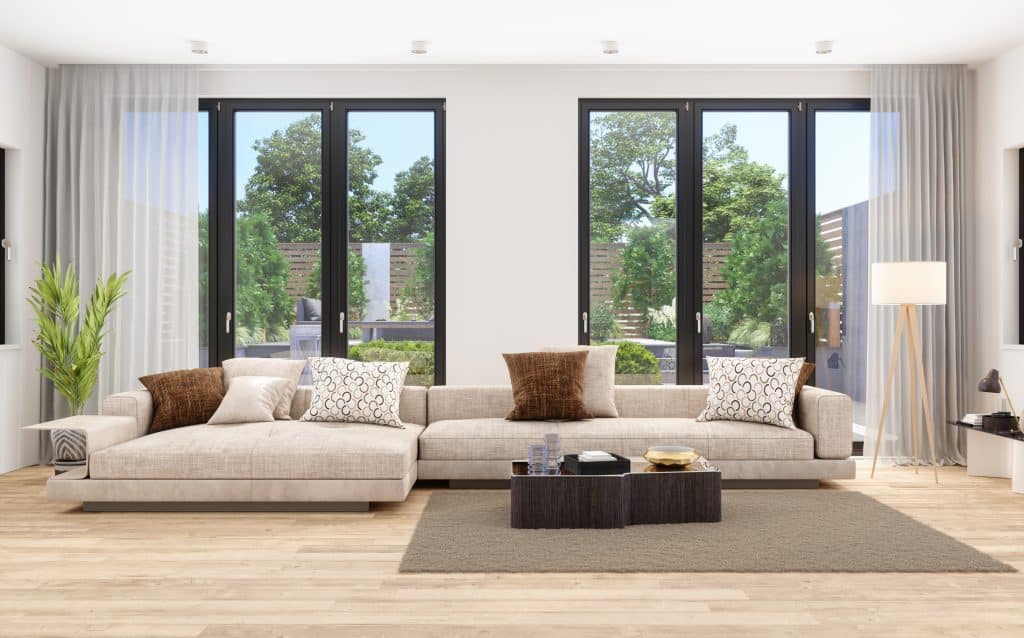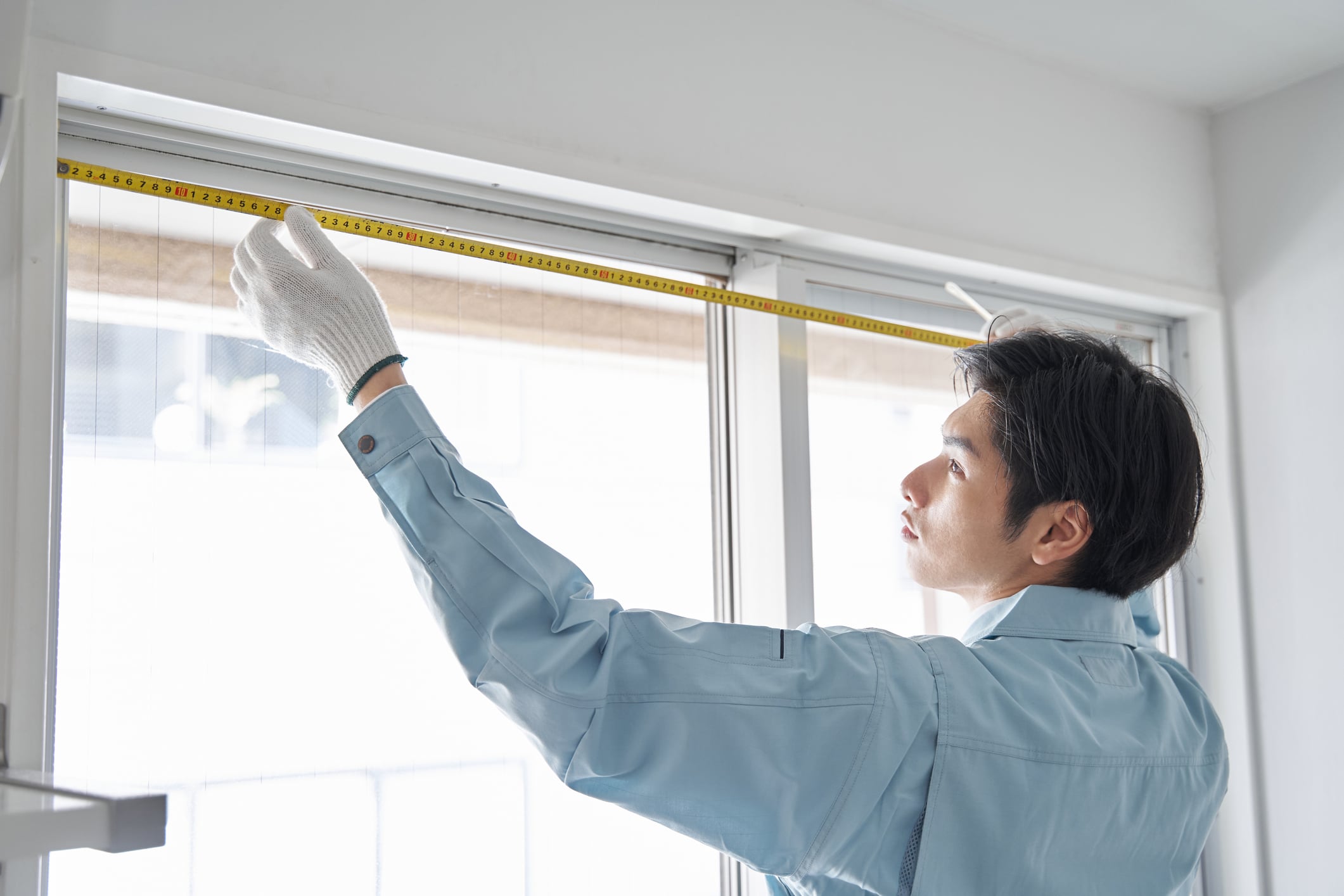Windows are more than just openings to the outside world—they significantly impact your home’s aesthetics, comfort, and energy efficiency. Whether you’re building a new home or updating an existing one, understanding the different window styles and their suitability for various rooms can help you make the best choices. This guide will walk you through the most popular window styles in Canada and how to select the right ones for your needs.
Key Takeaways:
- Different window styles cater to specific functional and aesthetic needs.
- Proper selection enhances natural light, ventilation, and insulation.
- Regional climate, such as Alberta’s, should influence your choice.
- Choosing energy-efficient windows can lower heating and cooling costs.
The Importance of Choosing the Right Window Styles
Choosing the right windows for your home goes beyond just aesthetics – it’s about striking the perfect balance between functionality and design. Each window style offers its own set of advantages, and selecting the ideal type for each room can significantly elevate the comfort, value, and beauty of your home. Here’s how:
- Enhance Architectural Appeal: The right windows can complement the overall design and style of your home. Whether you prefer traditional, modern, or contemporary architecture, appropriate window types help create a cohesive and visually pleasing exterior. Consider how windows frame your views and contribute to the character of each room.
- Optimize Natural Light: Windows are essential for allowing sunlight to flood your interior spaces. By carefully selecting window styles that maximize daylight exposure, you can create bright, inviting environments while reducing your reliance on artificial lighting. Natural light can also have a positive impact on your mood and overall well-being.
- Improve Energy Efficiency: High-quality, energy-efficient windows help maintain consistent indoor temperatures by reducing heat transfer, which leads to lower heating and cooling costs. Look for windows that are designed with energy-saving features like double glazing, low-E coatings, and insulated frames to keep your home comfortable year-round.
- Boost Ventilation and Indoor Air Quality: Proper ventilation is key to maintaining healthy indoor air quality. Certain window types, such as casement and awning windows, allow you to easily adjust airflow, keeping your home fresh and preventing the build-up of humidity or stale air. This can be especially important for rooms like kitchens and bathrooms.
- Increase Your Home’s Resale Value: Choosing the right windows is an investment that can pay off when it comes time to sell. Potential buyers appreciate homes with modern, energy-efficient features, and well-chosen windows can improve curb appeal and highlight your home’s overall quality. A home with updated windows is often seen as a more desirable, long-term investment.
By carefully considering these factors, you can choose windows that not only fit your design preferences but also enhance your home’s functionality, energy efficiency, and long-term value.
Selecting the Right Windows: A Balance of Functionality and Design
1. Casement Windows
- Best For: Kitchens, living rooms, and hard-to-reach areas.
- Benefits: Casement windows are hinged at the side and open outward using a hand crank, allowing for excellent ventilation and unobstructed views. Their airtight seal, when closed, makes them highly energy-efficient, which is ideal for keeping heating and cooling costs low.
- Drawbacks: Casement windows require space outside the window to swing open, which can be limiting in areas like balconies, walkways, or patios. Additionally, the cranks and mechanisms may require maintenance over time.
- Prices: Casement windows typically cost between $250 and $700 per window, depending on the size, material (vinyl, wood, or fibreglass), and additional features like energy-efficient glazing.
- Common Sizes: Standard sizes range from 24″ x 36″ to 36″ x 60″, but custom sizes are available for larger openings.
2. Double-Hung Windows
- Best For: Bedrooms, bathrooms, and spaces where ventilation and a classic design are desired.
- Benefits: Double-hung windows have two operable sashes that slide vertically, allowing for versatile ventilation. You can open the top sash for hot air to escape and the bottom sash for cool air to enter. Their timeless design makes them suitable for a variety of home styles, particularly traditional and colonial.
- Drawbacks: Double-hung windows are not as energy-efficient as casement windows due to the potential gaps around the sliding sashes. Regular cleaning is needed to maintain both sashes, especially if they tilt inward.
- Prices: These windows typically range from $300 to $800 per window, depending on the size and material (vinyl, aluminum, or wood). Higher-end options with energy-efficient features can cost more.
- Common Sizes: Standard double-hung window sizes include 24″ x 36″, 28″ x 54″, and 32″ x 56″, but custom sizing is available for larger openings.
3. Picture Windows
- Best For: Living rooms, areas with scenic views, or spaces where natural light is a priority.
- Benefits: Picture windows are large, fixed panes of glass that do not open. They allow for maximum natural light and provide clear, expansive views of the outdoors. Since they are fixed, they are highly energy-efficient and have no moving parts to maintain.
- Drawbacks: The major drawback of picture windows is the lack of ventilation. Without proper glazing or coatings, they can also contribute to heat gain in the summer or heat loss in the winter.
- Prices: Picture windows generally cost between $500 and $1,200, depending on size, framing material, and glass type. Custom options with advanced glazing or Low-E coatings may cost more.
- Common Sizes: Popular sizes range from 36″ x 48″ to 72″ x 60″. Larger custom sizes can be designed to suit specific architectural features, such as floor-to-ceiling windows.
4. Awning Windows
- Best For: Bathrooms, basements, and spaces where ventilation is needed but exterior space is limited.
- Benefits: Awning windows are hinged at the top and open outward, allowing for ventilation even during rainy weather. This makes them ideal for areas that need airflow but where rain could be a concern, such as basements and bathrooms. Their compact size also makes them perfect for tight spaces.
- Drawbacks: Awning windows tend to be smaller in size and may offer limited views compared to larger window styles. They also may not suit homes with modern, expansive designs.
- Prices: Awning windows typically cost between $250 and $700, depending on material, size, and energy-efficient features.
- Common Sizes: Common sizes range from 20″ x 24″ to 30″ x 60″, though custom sizes are available for specific installations.
5. Tilt-and-Turn Windows
- Best For: Bedrooms, contemporary homes, or areas where ease of cleaning and ventilation are important.
- Benefits: Tilt-and-turn windows are a versatile style that offers two opening options: they can tilt inward for ventilation or swing open like a door for easy cleaning and maximum airflow. These windows are known for their sleek, modern design and advanced functionality, offering excellent air-tight seals for energy efficiency.
- Drawbacks: Tilt-and-turn windows can be more expensive upfront due to their advanced design and multi-functional hardware. They may also require specialized maintenance to ensure the mechanisms operate smoothly.
- Prices: The cost for tilt-and-turn windows ranges from $600 to $1,500 per window, depending on size, material, and features.
- Common Sizes: Sizes typically range from 24″ x 36″ to 48″ x 72″. Custom sizes are available to accommodate larger openings.
Considerations for Alberta’s Climate
Living in Alberta means dealing with diverse weather conditions, from cold winters to warm summers. When choosing window styles, prioritize:
- Energy Efficiency: Look for Energy Star-rated windows with Low-E coatings and multiple panes to minimize heat loss during winter and reduce cooling needs in summer.
- Durability: Opt for materials like vinyl or fibreglass, which resist Alberta’s temperature fluctuations and require minimal maintenance.
- Sealing and Insulation: Ensure windows have tight seals and weather-resistant features to keep drafts at bay.
The Role of Energy Efficiency in Window Selection
Energy-efficient windows are a smart investment that benefits both the environment and your wallet. By reducing heat transfer, they help to maintain a comfortable indoor climate year-round while lowering your utility bills. When shopping for energy-efficient windows, look for the following key features to maximize performance:
1. Double or Triple Glazing:
Multiple Glass Panes for Better Insulation: Double-glazed windows have two layers of glass, while triple-glazed windows have three. The space between the panes acts as an insulating barrier, reducing the amount of heat lost through the windows and improving overall energy efficiency. This added layer of protection helps to keep your home warmer in winter and cooler in summer, making it easier to maintain a consistent temperature and reduce reliance on heating or cooling systems.
2. Low-E Coatings:
Reflecting Heat for Year-Round Comfort: Low-emissivity (Low-E) coatings are thin, invisible layers applied to the surface of the glass. These coatings reflect infrared light while allowing visible light to pass through. This feature helps to keep the heat inside your home during the colder months and blocks excessive solar heat in the summer. As a result, Low-E windows contribute to better temperature regulation and reduce the need for air conditioning and heating, leading to substantial savings on energy costs.
3. Gas Fills:
Enhanced Thermal Performance with Argon or Krypton: Between the glass panes, windows can be filled with inert gases like argon or krypton. These gases are denser than air and have lower thermal conductivity, meaning they help to reduce the transfer of heat and cold. As a result, gas-filled windows provide superior insulation, helping to maintain your home’s indoor temperature and reduce your energy consumption. In addition to improving comfort, gas fills also reduce the likelihood of condensation forming between the panes, which can cause damage and impair visibility.
By choosing windows that feature these energy-efficient technologies, you can significantly reduce the amount of energy needed to heat and cool your home. This not only lowers your utility bills but also helps to reduce your overall carbon footprint, making your home more environmentally friendly.
Making the Right Window Choice for Each Room

Selecting the ideal window style for each room is essential to maximize functionality and aesthetic appeal. Here’s a detailed guide:
Living Rooms
The living room is often the heart of the home, where families gather and entertain guests. To create a welcoming and bright space, prioritize windows that enhance natural light and offer expansive views. Picture windows or bay windows are excellent choices. These styles not only flood the room with sunlight but also create a focal point that can elevate your interior design. For added functionality, consider combining a picture window with operable side panels, like casement or awning windows, to allow ventilation.
Bedrooms
In bedrooms, privacy and comfort are paramount. Double-hung windows or tilt-and-turn windows are ideal for these spaces. Double-hung windows offer versatile ventilation options—open the top sash for gentle airflow without compromising privacy or safety. Tilt-and-turn windows provide even more flexibility, allowing secure ventilation with their inward tilt function. For energy efficiency, choose windows with insulated frames and Low-E glass to maintain a comfortable temperature year-round.
Kitchens
Kitchens require windows that are easy to operate and provide effective ventilation, especially to manage heat and cooking odors. Casement windows are a practical choice, as their crank mechanism makes them simple to open, even in hard-to-reach areas above sinks or countertops. Their outward opening design allows maximum airflow, which is essential for maintaining a fresh and pleasant kitchen environment. For added convenience, select casement windows with easy-to-clean glass or removable grilles.
Bathrooms
Bathrooms need windows that balance ventilation and privacy. Awning windows are an excellent option, as they can be installed higher on the wall to maintain privacy while still allowing fresh air to circulate. Alternatively, consider frosted or textured glass for enhanced privacy without the need for blinds or curtains. These windows also help prevent moisture buildup, reducing the risk of mold and mildew.
Basements
Basement windows often face unique challenges, such as limited space and lower light levels. Hopper windows, which open inward from the top, are a practical solution for small spaces. They provide adequate ventilation while maintaining a low profile. Sliding windows are another popular choice for basements, offering a wider opening for natural light and airflow without taking up additional space. Ensure that basement windows meet egress requirements for safety in case of emergencies.
By tailoring your window choices to the specific needs of each room, you can create a home that is not only functional but also stylish and energy-efficient. From the brightness of your living room to the coziness of your bedroom, the right windows make all the difference.
Custom vs. Standard Sizes: Which Window Size is Right for You?
While standard window sizes are more cost-effective, custom windows may be necessary for unique architectural designs or renovations. Work with a trusted window manufacturer to ensure proper fit and quality.
Selecting the right window styles for your home is an investment in comfort, efficiency, and aesthetic appeal. By considering factors like functionality, design, and climate, you can make informed decisions that add value to your home. For expert advice and premium window solutions tailored to Canadian homeowners, contact us today to book a free consultation or get a quote.



